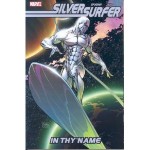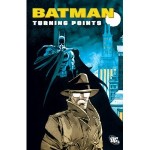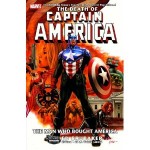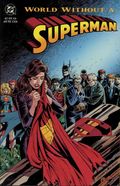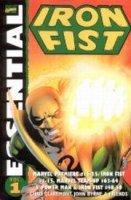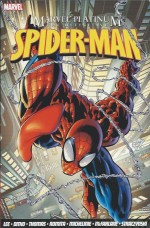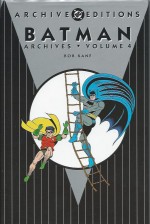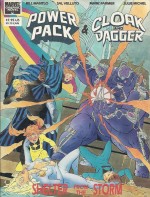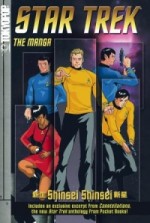
By Chris Dows, Joshua Ortega, Jim Alexander, Mike W. Barr, Rob Tokar, Makoto Nakatsuka, Gregory Giovanni Johnson, Michael Shelfer, Jeong Mo Yang & EJ Su (Tokyopop)
ISBN: 978-1-59816-744-3
Whilst the stellar Star Trek brand and franchise might not have actually reached any new worlds yet, it certainly has permeated every civilisation here on Earth, with daily live-action and animated screen appearances appearing somewhere on the planet almost every hour and comics iterations generated in a host of countries long lying fallow and unseen.
If only somebody could sort out the legal and logistical hassles so we could see again the stunning UK strips which appeared in Joe 90, TV21, TV Comic and Valiant from such fabulous creators as Angus Allan, Harry Lindfield, Mike Noble, Alan Willow, Ron Turner, Jim Baikie, Harold Johns, Carlos Pino, Vicente Alcázar, John Stokes and others, I could die a happy boy…
In 2006, to celebrate the 45th anniversary of the phenomenon, and capitalising on the global boom in Japanese styled comics, Tokyopop began releasing a series of all new manga adventures starring the indomitable crew of the Starship Enterprise as they boldly went all over the universe, courtesy of a serried band of international comics creators…
This initial monochrome masterpiece kicks off with ‘Side Effects’ by Chris Dows & Makoto Nakatsuka, and finds Captain Kirk, Science Officer Spock, Dr. McCoy and Ensign Pavel Chekov investigating a derelict ship which houses unsuspected horrors. Aboard the aged vessel are bodies from many species, displaying the hideous evidence of ruthless biological and mechanical augmentation…
When they release an exotic woman who appears to be the only survivor, she attacks them and infects Chekov with a virulent mutagenic virus whilst the other “corpses†revive and converge on them…
Although they beam back to the relative safety of the Enterprise, when a colossal vessel emerges from a wormhole, the derelict and Federation ship are swiftly snagged in a tractor beam and pulled into the time-dilation field of a Black Hole, seemingly harnessed to a ramshackle space-station.
Lost in space and time, Kirk beams a party over to the satellite in search of a cure for the disease ravaging Chekov, only to find the same unstoppable woman devastating the equally-infected remnants of an ancient civilisation who have sheltered aboard the station for centuries. Chief scientist Mynzek has been seeking a cure for untold ages, experimenting on volunteers and captives alike, but with success in his grasp at last, his latest subject has returned with vengeance in mind and her own all-assimilating agenda…
With resistance futile and the station rapidly self-destructing, Spock manages to secure a blood-sample to save Chekov, and the Enterprise quickly hurtles back through the wormhole and to the 23rd century, utterly unaware of the universal threat that will grow over the millennia from the last gasp of a desperate, dying civilisation and its first cyborg queen…
‘Anything But Alone’, by Joshua Ortega & Gregory Giovanni Johnson, sees the Enterprise orbiting an unknown world in response to a mysterious signal. Beaming down, Kirk, Spock and McCoy discover the thriving survivors of a long dead civilisation, maintained by miraculous nano-machines which can construct anything the people could possibly need. However the gracious, welcoming, childless citizens of Ximega II are concealing a tragic secret which only head scientist Prekraft seems willing to reveal. Moreover, he seems to going crazy with loneliness…
”Til Death’ (Mike W. Barr & Jeong Mo Yang) opens with Captain Kirk performing one of his more pleasant duties by officiating at the wedding of crewmembers Becky Randall and Tom Markham whilst the Enterprise scans a long-dead planet. However when dormant automated systems begin firing on the ship from separate locations, the survey mission switches to investigation mode and two landing parties beam down to find the shattered remnants of a civilisation which clearly self-destructed.
Retrieving twin sarcophagi which have somehow survived the holocaust, the explorers return to the Federation vessel, but soon inexplicable events begin to disrupt the ordered running of the ship and discipline of the crew…
The elaborate electronic coffins had each contained a withered husk and, momentarily forgotten as friends and lovers increasingly turn on each other, power is leeched from ship’s systems to rejuvenate the interred aliens. Soon the telepathic tyrants Faron and Nadira are fully restored and ready to finally end the hate-fuelled gender-war which pitted male against female and eradicated all life on their world. How lucky that there are so many men and women on the ship to act as their drones. But how unfortunate that one is a coldly dispassionate telepathic half-breed whose best friend is the most stubborn man in the galaxy…
A diplomatic mission to end an interplanetary conflict sees the Enterprise acting as a cargo courier, shuttling peace-making gifts between warring worlds. But whilst the entrancing emotion-reactive screen entitled The Weave by its Xoxxan craftsmen delights and beguiles all who regard it, the cutely appealing sacred animal ‘Oban’ genetically recreated by the Xanvians conceals a monstrous and deadly secret which only becomes apparent when an unfortunate accident releases a mind-boggling, indestructible horror on the ship…
Faced with the prospect of renewed war, Kirk and Spock must determine if a maverick dissident, a duplicitous government or an impossible freak occurrence has endangered the tenuous peace process in a compelling political thriller by Jim Alexander & Michael Shelfer.
The manga action ends in classic style with ‘Orphans’, by Rob Tokar & E.J. Su, as the Enterprise performs escort duty for a peaceful space-faring race plagued by piracy. However the Lowarians and James T. Kirk have sadly underestimated the determination of the Haarkos, whose one-man raider-craft were shaped like humanoid robot-knights – complete with gigantic, lethal swords and shields…
When the battle-crazed mecha attack the starship, the lead pilot loses her life and another is captured before the Enterprise’s superior firepower drives off the rest of the pack, leaving Kirk with the impossible task of trying to reason with a merciless, ten-year old boy-soldier trained to kill from infancy.
If Kirk cannot find a way to reason with the honour-obsessed, battle-hardened warrior Xill he may have no choice but to exterminate all of these brutal, suicidal children who are as much victims as the race they now prey upon…
This particular edition (there are three counting a Diamond Distributor Exclusive and a Convention Special Exclusive) also includes the moving short-story ‘First, Do No Harm’ (by Dayton Ward & Kevin Dillmore from the prose Star Trek anthology Constellations) which details an unpleasant and unwelcome mission to extract rogue doctor Revati Jendra from the closed, primitive world of Grennai.
The fugitive medic’s actions contravene the Prime Directive and daily endanger the social development of the entire planet, even though she perfectly blends in with the natives and saves lives in a manner no patient would ever suspect as being beyond planetary norms…
However, as her close friend of twenty years, Leonard McCoy knows that there must be a damned good reason for her actions, whilst Kirk and Spock are more concerned by Starfleet’s suspicious wall of “classified†and “top security†roadblocks surrounding every aspect of her first expedition to Grennai decades ago…
Full of the verve, sparkle and wide-eyed enthusiasm of the original TV show, these continuing adventures are a real treat, and even if the manga visuals are a bit of a shock at first, you’ll soon adapt and surely settle in for another splendid ride on the timeless rollercoaster ride that is Star Trek…
™, ® & © 2006 CBS Studios Inc. All rights reserved.

